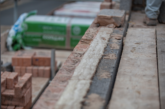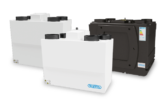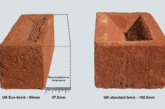In light of of changes to Part L in June 2022, Mark Wilkins, Training and Technologies Director at Vaillant, looked at the considerations these regulation changes have on the provision of heating systems in domestic new build properties.
From 2025, housebuilders and specifiers will be expected to build new properties to meet the Future Homes Standard (FHS). The FHS will incorporate high-fabric standards and low-carbon heating systems to ensure new homes produce 78% less carbon emissions than homes built under the current regulations.
Providing a steppingstone toward the 2025 FHS are the changes to Part L, which came into force in June 2022. With the aim of reducing carbon emissions in new build homes by 31% in the immediate future, it provides a welcome move to start the decarbonisation process.
These interim changes will also use the, as yet, unpublished SAP 10.3, to demonstrate build compliance. Assessing a property’s CO2 emissions, its fabric energy efficiency standard and primary energy to establish its overall efficiency.
What is clear from these new regulations, is that it is all about increasing energy efficiency, with an overarching aim to dramatically reduce the overuse of fuel being consumed from the outset.
Considering the options
In a bid to remove the worst performing products from the new build market, minimum product efficiency thresholds have been increased as part of the Part L changes. Yet, the reduction in emissions and increases in efficiency needed make it clear that, longer term, this can’t be achieved using fossil fuels alone, and housebuilders choosing to shift to low carbon technologies now could be making a prudent move.
The new rules do allow some flex to suit the property in hand and the interim Part L uplift means it may still be possible to install a high efficiency gas boiler in a new property until 2025. However, it is notable that to meet requirements, it will need to be supplemented with solar PV panels. Depending on an individual property’s location and size, as well as the overall size of the development, this may exclude it as an option as costs may be comparable to opting straight for a heat pump system.
Although hydrogen has been much talked about in the heating arena of late, as it remains very much in its testing phase at present, it was not included in this latest round of regulation changes. The expectation is that it may appear in post 2025 guidance.
Working with lower temperatures
Reducing running temperatures is something the industry has been discussing for many years and has now been addressed in the latest regulations. To further improve efficiency and prepare for a low carbon future, heating systems will be designed to a 55°C, or lower, water flow temperature.
This is a significant change for the industry, and better suits technologies such as heat pumps and new high-efficiency boilers as they reach maximum optimisation at a lower flow temperature. However, this needs to be supported by a shift in system design.
Radiators will need to be sized correctly to accommodate a reduced water temperature for both boilers and heat pumps. Already a requirement for heat pump design, many housebuilders may choose to adopt low carbon technologies now to maximise the larger radiators and low temperature system in place. Equally, those specifying a boiler with oversized radiators will be leaving the options open for a heat pump to be installed in the future with less disruption to the homeowner.
In control
Any system is only as efficient as its accessories, and Part L also makes moves to install more effective heating controls to deliver additional savings. Making the system more intelligent, rather than simply turning the boiler on and off, features such as weather compensation will ensure the system modulates effectively, whether specified with a heat pump or boiler, in line with the weather and outside climate.
Setting the standard
For housebuilders and specifiers wanting to explore their options, help and advice is readily available from manufacturers and should be taken advantage of. An air to water heat pump, unlike a boiler, needs to be placed outside, and so it’s important for housebuilders to work with the manufacturer to explore all options available. For some properties a more discreet heat pump placement, further away from the house, may be desirable. Vaillant’s aroTHERM Split can support an installation 25 metres away from the building, so that it can be located in an inconspicuous part of the plot.
To guide contractors and developers through different low carbon technologies and specify the most energy efficient solution, Vaillant has consolidated its complete end-to-end expertise under the Vaillant Standard. Here, housebuilders and specifiers can access support before a spade breaks the ground, with access to specialist teams that can help with designing systems, right through to training, correct commissioning, and after-sales support once a project is complete.
Expanding knowledge
When the new regulations come into force in June, it is estimated that it could lead to circa 200,000 heat pumps being installed in new build properties each year. Catapulting training once again into the spotlight.
To achieve these results, we need a properly trained network of installers out in the field. And, to future-proof the industry in the years to come, heating and hot water systems engineers who can install the most suitable low-carbon system for a property are needed – not just specialising in a singular technology, such as heat pumps.
To this end, Vaillant has been working with the Chartered Institute of Professional Heating Engineers (CIPHE) and the LCL Awards to develop an accredited qualification in Low Temperature Heating and Hot Water Systems in Dwellings, which is due to be rolled out later this year.
Having both heat pump and boiler technology available, we’re able to provide support and training to both housebuilders and the contractors they work with, whether via bespoke training in our centres of excellence or on-site, to ensure the systems are installed in accordance to how they have been designed, and to provide technical support when needed. It’s crucial to have enough well-trained and qualified design and installation professionals able to install products; a challenge we can continue to help housebuilders overcome as low carbon becomes the norm.
A move in the right direction
These new Part L regulations are a positive move in the right direction as we make the move to decarbonise our home heating. It will help drive the least energy efficient products from the market and gives welcome direction to where attention should be focused to deliver the UKs low carbon future.









